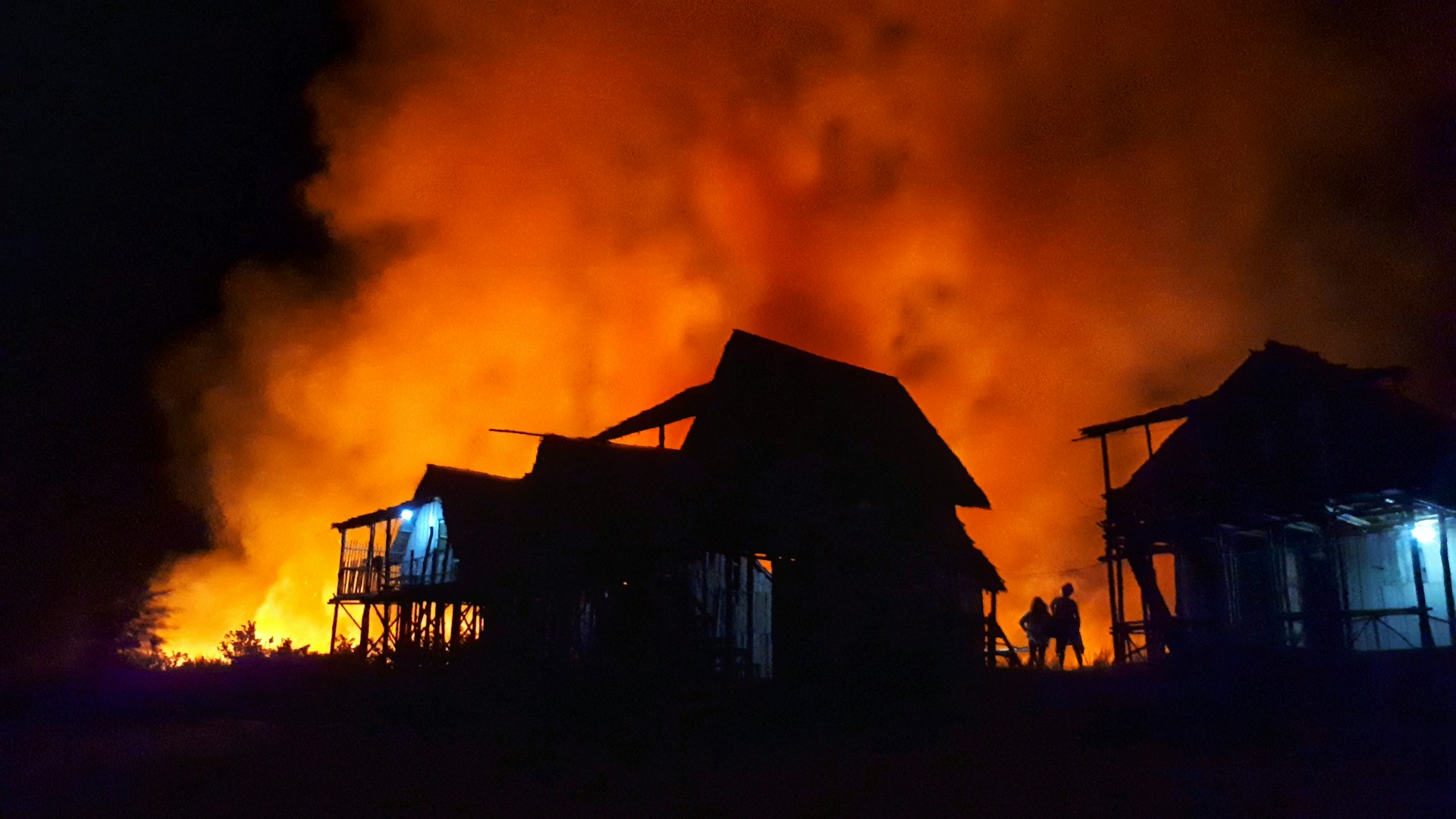Tactical
Top Handguns for Personal Protection in the Wilderness

When it comes to venturing into the great outdoors, personal protection should always be a top priority. The wilderness can be a beautiful and exhilarating place, but it can also pose unexpected challenges and dangers. As someone who has lived and thrived in the wilderness, I understand the importance of being prepared for any situation.
One essential tool that every outdoorsman should consider is a reliable and effective handgun for personal protection. While there are numerous options available on the market, today I will share with you some of the best handguns that will serve you well in the wild.
1. Glock 20:
The Glock 20 is a powerhouse when it comes to handguns. Chambered in 10mm Auto, it offers excellent stopping power and is known for its reliability. The high capacity magazine allows for more rounds, giving you confidence in the face of danger. Additionally, the Glock 20’s durability makes it suitable for rough outdoor environments.
2. Smith & Wesson 686:
For those who prefer a revolver, the Smith & Wesson 686 is a fantastic choice. Chambered in .357 Magnum, this reliable and sturdy handgun can take on any challenge. Its double-action trigger provides a smooth and consistent pull, allowing for accurate and controlled shots. The versatility of the .357 Magnum also allows you to use .38 Special ammunition, giving you more ammunition options in the wild.
3. Ruger Super Redhawk:
With its iconic look and superb performance, the Ruger Super Redhawk is an excellent choice for personal protection in the wild. Available in various calibers, including .44 Magnum and .454 Casull, this revolver packs a serious punch. The Super Redhawk’s rugged design and adjustable sights make it a reliable companion in any outdoor adventure.
4. Sig Sauer P229:
If you favor a compact and lightweight semi-automatic handgun, the Sig Sauer P229 is worth considering. Chambered in .40 S&W or .357 SIG, this handgun offers a balance of power, accuracy, and reliability. Its durable construction and ergonomic design make it comfortable to carry and easy to handle during long hikes or camping trips.
5. Kimber 1911:
No list of the best handguns would be complete without mentioning the classic Kimber 1911. Chambered in .45 ACP, this timeless semi-automatic pistol has proven itself in countless situations. With its solid construction and exceptional accuracy, the Kimber 1911 is a reliable choice for personal protection in the wild.
Remember, choosing the best handgun for personal protection is a matter of personal preference and comfort. It is crucial to practice proper firearm safety and receive adequate training before taking your firearm into the wilderness. Always familiarize yourself with local laws and regulations regarding carrying firearms in the areas you plan to visit.
Having a trusted and effective handgun at your side can provide peace of mind and increase your chances of staying safe in the wild. But remember, a firearm is only a tool. It’s essential to develop a mindset of situational awareness, preparedness, and respect for nature. Trust your instincts, be aware of your surroundings, and, most importantly, prioritize your safety.
So, if you’re planning your next outdoor adventure, don’t forget to choose a handgun that suits your needs and equips you to handle any situation that may arise. Stay safe, be prepared, and embrace the wild with confidence.
Keep exploring!

Preparedness
5 Everyday Items in Your Home That Can Help You Protect Yourself

Most people don’t keep traditional self-defense tools around the house, but that doesn’t mean you’re helpless in an emergency. The truth is, you already own simple items that can give you precious seconds to get away, call 911, or draw attention. The key is knowing what works, what’s legal, and how to use these items only to defend yourself when you have no other choice.
Here are five practical household items that can help you stay safe during a threatening situation:
1. A Heavy-Duty Flashlight
A solid, metal flashlight is one of the best non-lethal tools you can keep within reach.
It serves two purposes:
• The bright beam can disorient someone long enough for you to escape.
• The sturdy body gives you something to hold if you need to keep distance between yourself and a threat.
Keep one by your bed and another near your front door.
2. A Loud Personal Alarm or Air Horn
Sometimes the strongest defense is noise. A personal alarm or small air horn can draw attention fast and frighten off an intruder. These devices are inexpensive, easy to use, and require no physical strength. They also alert neighbors that something is wrong, which can shorten response time dramatically.
3. A Strong Walking Cane
For older adults especially, a cane can be surprisingly effective for self-defense if absolutely needed. Its length helps you create distance, and its solid structure gives you a way to push someone back without having to get close. Even if you don’t use a cane daily, keeping one near your bedroom can be smart.
4. A Fire Extinguisher
Beyond its intended use, a fire extinguisher can help you defend yourself in two ways:
• The blast of spray can temporarily block vision and breathing, allowing you to escape.
• Its weight gives you something sturdy to hold while you retreat.
Plus, it’s already a safety essential for your home.
5. A Kitchen Pan or Lid
If you’re caught in the kitchen, a heavy pan or even a metal pot lid can create an effective barrier. A lid works like a small shield, helping you protect your face and upper body as you move away. A pan gives you something solid to hold between you and a threat.
A Final Note on Safety
Self-defense is always about getting away safely, not engaging in a fight. Your first options should always be:
• Avoid the situation
• Lock or barricade a door
• Call for help
• Get to safety
Use objects only as a last resort and only to give yourself time to escape.
Preparedness
The Top Survival Foods That Last for Years (and Actually Taste Good)

When emergencies strike, whether it’s a power outage, a storm, or a supply shortage the food you have on hand can make all the difference. Building a practical, long-lasting food stockpile doesn’t mean settling for bland meals or astronaut rations. With a bit of planning, you can create a pantry that’s nutritious, comforting, and ready for anything.
1. Rice: The Reliable Staple
Rice is a survival classic for a reason. It’s inexpensive, lightweight, and can last over 20 years if stored properly in airtight containers with oxygen absorbers. Pair it with beans, canned vegetables, or spices to make complete meals. Brown rice offers more nutrition but has a shorter shelf life about six months, so white rice is the go-to for long-term storage.
2. Beans: Protein That Never Quits
Dried or canned, beans are a powerhouse of protein, fiber, and minerals. They fill you up fast and combine perfectly with rice for a balanced diet. Dried beans keep for decades, while canned varieties are ready to eat in minutes just check expiration dates every year.
3. Peanut Butter: The Energy Saver
Packed with calories, healthy fats, and protein, peanut butter is a morale booster when fresh food is scarce. It requires no cooking, lasts up to two years unopened, and offers comfort in uncertain times. It’s especially useful for families with children.
4. Canned Meats and Fish
Tuna, chicken, salmon, and even Spam are excellent sources of protein and essential fats. Canned meats last several years and can be eaten cold if cooking isn’t an option. Rotate them every 18–24 months to maintain freshness and flavor.
5. Oats: Breakfast and Beyond
Oats are nutrient-dense, easy to prepare, and versatile, you can make oatmeal, granola, or even use them as a flour substitute. Stored in a sealed container, they’ll last for years and provide sustained energy.
6. Honey: Nature’s Forever Food
Honey never spoils. Archaeologists have found jars of honey thousands of years old that are still edible. It’s a natural sweetener, cough remedy, and wound treatment. Keep it sealed and store at room temperature if it crystallizes, just warm it gently.
7. Powdered Milk and Eggs
These are perfect for baking, cereal, or protein shakes when fresh dairy isn’t available. Properly stored in cool, dry places, powdered milk lasts up to 10 years, while powdered eggs can stay good for up to 5.
8. Salt and Seasonings
Salt isn’t just a flavor enhancer, it’s a preservative and electrolyte source. Pair it with spices and dried herbs to make otherwise dull survival meals much more enjoyable. Comfort food matters more than you think during stressful times.
9. Dried Fruits and Nuts
These provide quick energy, healthy fats, and essential vitamins. They’re ideal for snacking or adding to cereals and trail mixes. Store them in airtight containers to extend their shelf life up to a year or more.
10. Freeze-Dried Meals
Modern freeze-dried meals have come a long way, they’re lightweight, tasty, and can last 25 years or longer. Just add water and you’ve got instant lasagna, chili, or chicken teriyaki. They’re expensive, but worth including for convenience.
Final Thought
Survival food isn’t about hoarding, it’s about being smart. Build your stock gradually, rotating items so nothing goes to waste. Focus on variety, nutrition, and comfort foods that boost morale. The best survival pantry is one that you’d happily eat from even without an emergency.
Preparedness
Smart Person’s Checklist: 10 Things You’ll Wish You Had When Disaster Strikes

Because peace of mind beats panic every time
When a big storm’s coming, the news spreads fast. Shelves empty, gas stations fill up, and suddenly everyone’s buying bottled water like it’s gold. The truth is, once panic buying starts, it’s already too late. Real preparedness isn’t about fear it’s about peace of mind. The best time to get ready is when things still feel normal.
Here are ten simple, affordable items you can stock quietly now so you’re not scrambling later.
1. Water and Water Filters
Start with the basics: one gallon per person per day for at least three days. Keep bottled water handy, but also grab a small filter straw or purification tablets for backup. Clean water matters more than anything else when supplies run short.
2. Non-Perishable Food
You don’t need fancy freeze-dried meals. A few weeks’ worth of canned goods, rice, oats, peanut butter, and protein bars go a long way. Choose foods you actually eat, rotate them out as part of your normal pantry.
3. First-Aid Kit and Medications
Every home needs one. Bandages, antiseptic, gloves, and basic medicines like pain relievers and allergy pills can make a huge difference. If you take prescription medication, try to keep at least a few extra days’ supply on hand.
4. Flashlights and Extra Batteries
When the power goes out, light is everything. Stock a few small LED flashlights and a headlamp for hands-free use. Don’t forget extra batteries or a crank-powered option that never needs charging.
5. Portable Charger or Power Bank
Phones are lifelines during emergencies. Keep a charged power bank in your bag or car. Solar versions are great backups if you’re stuck without power for days.
6. Trash Bags and Zip Ties
Sounds simple, but trash bags are a survival essential. They can collect waste, store supplies, or even serve as ponchos or tarps. Pair them with a handful of zip ties one of the most underrated tools for securing gear or sealing openings.
7. Manual Can Opener
If your food storage depends on cans, make sure you can open them without electricity. A sturdy manual can opener can save you a lot of frustration (and hungry hours).
8. Multi-Tool or Pocket Knife
A good multi-tool replaces an entire toolbox in an emergency. Cutting rope, fixing leaks, opening packages you’ll use it more often than you think.
9. Basic Hygiene Supplies
Soap, toothbrushes, wet wipes, and feminine products often get overlooked. Staying clean keeps morale up and illness down, especially when running water isn’t guaranteed.
10. Emergency Cash
If card readers go down, cash is still king. Keep small bills in a waterproof envelope somewhere safe but easy to grab.
Final Thought
Preparedness isn’t about hoarding or panic, it’s about independence and calm. When something unexpected happens, the people who’ve planned ahead are the ones helping others instead of fighting for supplies.
📝 Starter Supply Checklist
☑ Water (1 gallon per person per day)
☑ Food for 3–7 days
☑ First-aid kit and medicines
☑ Flashlights + batteries
☑ Power bank or solar charger
☑ Trash bags + zip ties
☑ Manual can opener
☑ Multi-tool or knife
☑ Hygiene essentials
☑ Small cash reserve
-

 Tactical2 years ago
Tactical2 years ago70-Year-Old Fends Off Intruder with Lead-Powered Message
-

 Tactical2 years ago
Tactical2 years agoVape Shop Employee Confronts Armed Crooks, Sends Them Running
-

 Preparedness1 year ago
Preparedness1 year agoEx-Ballerina’s Guilty Verdict Sends Tremors Through Gun-Owner Community
-

 Off The Grid4 weeks ago
Off The Grid4 weeks ago10 Foods That Could Save Your Life When Grocery Shelves Are Empty
-

 Preparedness1 year ago
Preparedness1 year agoGood Samaritan Saves Trooper in Harrowing Interstate Confrontation
-

 Tactical2 years ago
Tactical2 years agoMidnight SUV Theft Interrupted by Armed Homeowner’s Retaliation
-

 Preparedness5 months ago
Preparedness5 months agoHow Much Gasoline Should You Store for Emergencies?
-

 Survival Stories2 years ago
Survival Stories2 years agoEmily’s 30-Day Experience of Being Stranded on a Desert Island
Felix Famularo
November 23, 2023 at 4:04 pm
Prefer a 9mm. Ammo easier to acquire. More people have it and might be likely to share a few rounds if necessary. Sig Sauer model P365 XL is my carry.
Charles Evering
December 15, 2023 at 2:08 pm
Which ever one you have is the one to have, but 9mm are best since most police and militaries carry them
Tom
April 28, 2024 at 6:20 pm
Taurus Raging Hunter in .460S&W.
With proper bullet placement will disable anything up to a T-Rex.
Nick
July 28, 2024 at 12:24 pm
Remember it’s not the pen it’s the penmanship that counts!
Gerald Fontenot
August 29, 2024 at 11:46 am
Get a weapon that feels good when you have it in your hand and that you can shoot comfortably with accuracy.